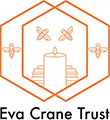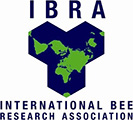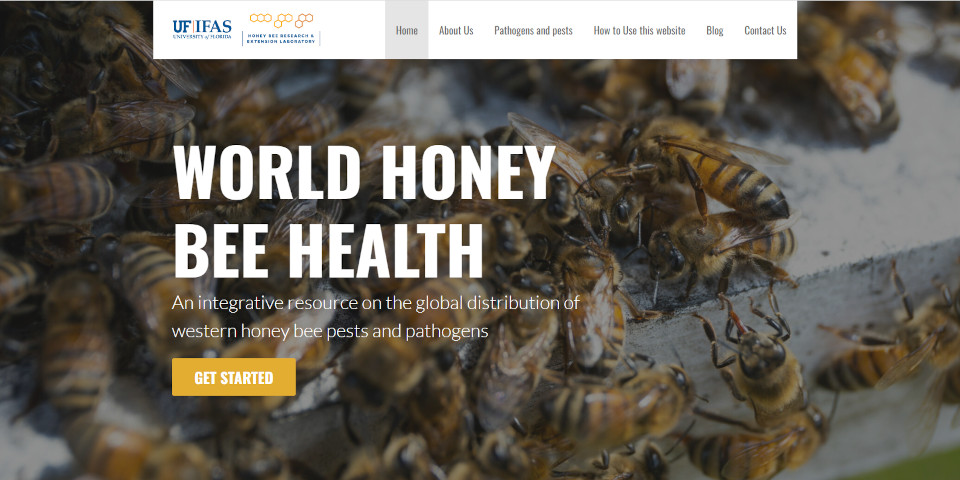World Honey Bee Health
ABOUT
The health of managed colonies of western honey bees (Apis mellifera) is a topic of international concern given the importance of honey bees to crop pollination systems and the overall health of natural ecosystems. Honey bees host a suite of pests and pathogens, many of which are capable of killing colonies outright. Knowing the global distribution of these pests and pathogens is key to developing strategies for their control and limiting their spread further.
Nicola Bradbear (1988) and Andrew Matheson (1993, 1995, 1996) were first to publish reviews of the global distribution of honey bee pests and pathogens. Their work was updated several years later by Mark Allen and Brenda Ball (1996), who published information on virus incidence and world distribution, and by James Ellis and Pamela Munn (2005) who expanded, updated, and consolidated the earlier reviews.
In 2018-2019, Humberto Boncristiani and Jamie Ellis took the challenge to update the work once again and the result is the newly published review at the journal Bee World that you can get your pre-print copy HERE.
This website (worldhoneybeehealth.com) is our attempt to keep information on the worldwide distribution of honey bee pests and pathogens updated in real-time. It is our hope that this online resource will make a significant contribution to the study of honey bee health globally. We especially hope that this website will be a valuable tool to scientists, regulators, industry officials, beekeepers, and more as we all work together to improve the health of this invaluable bee species.
MISSION
The mission of the Honey Bee Research and Extension Laboratory (HBREL)is to advance our understanding of managed and wild honey bees globally, with the goal of improving the health and productivity of managed honey bees everywhere. We address this goal by conducting basic and applied research projects on honey bees, communicating our findings to assorted clientele groups through diverse extension programming, and training future generations of bee educators, researchers, conservationists, and more.
PATHOGENS AND PESTS
What follows is a list of the pathogens and pests known to be associated with honey bees. The criteria used to select the data presented in the tables below can be found HERE.
Bacteria
| Common name | Organism | Map Link | Table Link |
| European foulbrood | Melissococcus plutonius | MAP | TABLE |
| American foulbrood | Paenibacillus larvae | MAP | TABLE |
| Spiroplasma apis | Spiroplasma apis | MAP | TABLE |
| Spiroplasma melliferum | Spiroplasma melliferum | MAP | TABLE |
| Wolbachia | Wolbachia | MAP | TABLE |
Fungi
| Chalkbrood | Ascosphaera apis | MAP | TABLE |
| Nosema ceranae | Nosema ceranae | MAP | TABLE |
| Nosema apis | Nosema apis | MAP | TABLE |
| Nosema neumanni | Nosema neumanni | MAP | TABLE |
| Nosema spp. | Nosema apis + Nosema ceranae + Nosema neumanni | MAP | TABLE |
Protozoa
| Apicystis bombi | Apicystis bombi | MAP | TABLE |
| Crithidia mellificae | Crithidia mellificae | MAP | TABLE |
| Lotmaria passim | Lotmaria passim | MAP | TABLE |
| Amoeba disease | Malpighamoeba mellificae | MAP | TABLE |
Arthropods
| Tracheal Mite | Acarapis woodi | MAP | TABLE |
| Small Hive Beetle | Aethina tumida | MAP | TABLE |
| Apocephalus borealis | Apocephalus borealis | MAP | TABLE |
| Lesser Wax Moth | Achroia grisella | MAP | TABLE |
| Braula | Braula spp. | MAP | TABLE |
| Greater Wax Moth | Galleria mellonella | MAP | TABLE |
| Megaselia rufipes | Megaselia rufipes | MAP | TABLE |
| Megaselia scalaris | Megaselia scalaris | MAP | TABLE |
| Rondaniooestrus apivorus | Rondaniooestrus apivorus | MAP | TABLE |
| Senotainia tricuspis | Senotainia tricuspis | MAP | TABLE |
| Tropilaelaps Mite | Tropilaelaps spp. | MAP | TABLE |
| Varroa Mite | Varroa destructor | MAP | TABLE |
| Asian Hornet | Vespa velutina | Coming soon | Coming soon |
| Giant Asian Hornet | Vespa mandarinia | Coming soon | Coming soon |
| Wax Moth | Galleria mellonella + Achroia grisella | MAP | TABLE |
Viruses
| ABPV/KBV/IAPV | Acute Bee Paralysis Virus | MAP | TABLE |
| ABV | Apis mellifera bunyavirus 1 and 2 | MAP | TABLE |
| ADV | Apis mellifera dicistrovirus | MAP | TABLE |
| AFV | Apis mellifera flavivirus | MAP | TABLE |
| ANV-1 | Apis mellifera Nora Virus | MAP | TABLE |
| ARV | Apis mellifera Rhabdovirus 1 and 2 | MAP | TABLE |
| AIV | Apis iridescence virus | MAP | TABLE |
| ALPV | Aphid Lethal Paralysis Virus | MAP | TABLE |
| ArkBV | Arkansas Bee Virus | MAP | TABLE |
| BeeMLV | Bee Macula-like Virus | MAP | TABLE |
| BVX | Bee Virus X | MAP | TABLE |
| BVY | Bee Virus Y | MAP | TABLE |
| BerkBPV | Berkeley Bee Virus | MAP | TABLE |
| BSRV | Big sioux river Virus | MAP | TABLE |
| BQCV | Black Queen Cell Virus | MAP | TABLE |
| BBV# | Bundaberg bee virus | MAP | TABLE |
| Circo-like Virus 1-2 | Circo-like virus 1-2 | MAP | TABLE |
| CPV | Cricket paralysis virus | MAP | TABLE |
| CBPV | Chronic Bee Paralysis Virus | MAP | TABLE |
| CBPSV | Chronic bee-paralysis virus-associated satellite virus | MAP | TABLE |
| CWV | Cloudy Wing Virus | MAP | TABLE |
| NT1/NT-6/NT-17 | Darwin bee virus | MAP | TABLE |
| DWV *# | Deformed Wing Virus (A_B_C_D) | MAP | TABLE |
| EV# | Empeyrat Virus | MAP | TABLE |
| FV | Filamentous Virus | MAP | TABLE |
| Himetobi P Virus | Himetobi p virus | MAP | TABLE |
| TAS-7/ | Hobart Bee Virus | MAP | TABLE |
| KFV | Kelp Fly Virus | MAP | TABLE |
| LSV# | Lake Sinai Virus | MAP | TABLE |
| La Jolla Virus | La jolla virus | MAP | TABLE |
| MV | Moku Virus | MAP | TABLE |
| Nlv | Nodamura-like virus | MAP | TABLE |
| Plv | Partiti-like virus | MAP | TABLE |
| PBV# | Perth bee virus 1 and 2 | MAP | TABLE |
| RBV-1 | Renmark bee virus 1 | MAP | TABLE |
| RpV | Rhopalosiphum padi Virus | MAP | TABLE |
| Rbv# | Robinvale bee virus | MAP | TABLE |
| SBV | Sacbrood Virus | MAP | TABLE |
| Slv | Seco-like virus | MAP | TABLE |
| SBPV | Slow Bee Paralysis Virus | MAP | TABLE |
| Thika Virus | Thika Virus | MAP | TABLE |
| TRV | Tobacco ringspot virus | MAP | TABLE |
| VdMLV | Varroa destructor Macula-Like Virus | MAP | TABLE |
| VdV-2/3/4# | Varroa destructor Virus-2+3+4 | MAP | TABLE |
| VTLV | Varroa Tymo-like virus | MAP | TABLE |
Other
- *Deformed Wing Virus (DWV) is recognized as four distinct variants: (1) DWV-A, the original strain studied plus Kakugo virus; (2) DWV-B, the new classification of Varroa destructor virus 1 (VDV-1); (3) DWV-C, the newly discovered, more virulent variant of DWV and (4) DWV-D, known as the Egypt bee virus.
- #Future updates of this table will contain all pathogen strains separated in specific maps and tables. For clarity, we combined the strains into single species.
- Map – link to a map showing the updated distribution of the pest.
- TABLE – link to a table showing specific information about the pest.
MEET THE TEAM
The World Honey Bee Health team is composed of current or former members of the University of Florida Honey bee Research and Extension Laboratory in Gainesville, Florida, USA.











